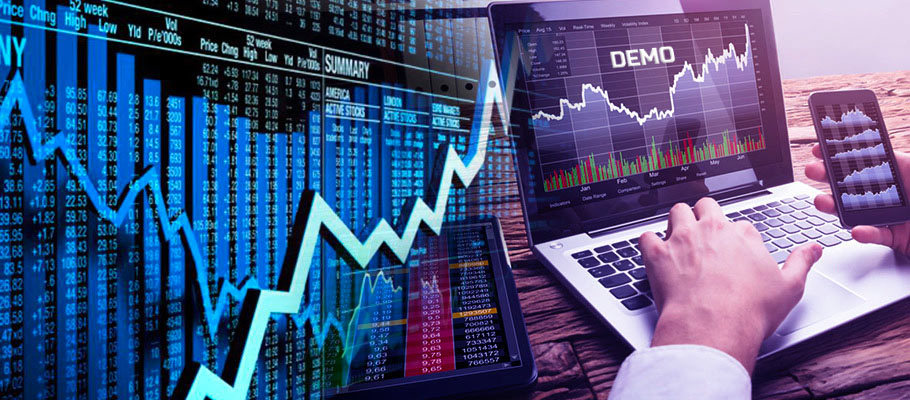
Demo trading, sometimes also known as paper trading, is the term we use for trading without real money, but instead by placing orders with fictitious money, or virtual capital. With the exception of the money used to trade, however, everything is real, including a live price feed with real prices, charts, and a fully functioning trading platform. Trading on a demo account offers, in other words, an experience that is as close to real trading as possible.
Almost all forex brokers that we have reviewed here on FX-List offers free demo trading accounts to anyone who wants to open one. Even better, opening a demo account is usually as easy as just registering with a username and email address.
Why are demo accounts free, you may wonder.
Well, it‘s simply because the broker is happy to let you try out their trading platform and get comfortable with trading, so that hopefully you come back next time around with real money. And that is, in fact, what usually happens. In this sense, demo accounts are a win-win for both brokers and traders.
So, when exactly should or shouldn’t you demo trade in the Forex, CFD or Equity market then?
Although demo trading is identical to real trading from a technical standpoint, it’s a very different thing in terms of human psychology and emotions. And if you don’t think these are factors that influence your trading, think again.
To be frank, the truth is that trading cannot be fully learned in a demo environment. The reason for that is that your emotional response to making and losing money in a demo environment and in the real world will be totally different. Our human emotions simply cannot be replicated without real money on the line.
And unfortunately, people tend to act out of their emotional responses, regardless of what their original trading plan was.
As a result, you can never say that you have fully mastered the art of trading by only being profitable on a demo. No matter how many trades you make on that demo, you’ll need experience from the real thing.
So, now that you know when you shouldn’t trade on a demo, the question becomes: When should you?
Before we answer that, let’s just say that there’s no doubt that demo trading can be useful for a lot of things. You just need to keep in mind that it’s not the same as real trading, and therefore it shouldn’t be thought of as real trading experience.
Most importantly, demo trading - or paper trading - should be used to learn the ins and outs of a trading platform before you jump in with real money. Some trading platforms are fairly advanced, while others are quite simple to use. There are, in other words, some real differences between platforms. It’s therefore a good idea to make it a habit that for each new trading platform you’ll use, you start with a demo account first until you are fully familiar with the platform.
When learning a platform through the use of a demo account, it’s also important to practice the full trading routine, including market and limit order placement, stop-loss, how to calculate your risk level, and so on.
Although it sounds silly and easy to avoid, the reality is that a lot of money is lost by traders every day simply due to platform user errors. And given that this is probably the easiest trading mistake to avoid, it would be a shame to fall victim to it. Therefore, learn the platform on a demo first and make sure you don’t become one of those unlucky traders!
Another good reason for demo trading is to do live testing of new trading strategies. While you may have already performed a back-test, and thus know that the strategy produced good results in the past, that alone doesn’t mean it will perform the same way in the future. It’s therefore good practice to also forward-test the strategy in a demo environment before going live with it.
Lastly, another important thing to keep in mind when you demo trade is the amount of virtual capital you trade with. Many brokers will simply give you a standard amount of virtual capital like USD 10,000 to trade with, but the truth of the matter is that many retail traders only have a couple of thousand dollars in real money to trade with. As a result, it’s easy to get a wrong picture of how quickly profits can accumulate.
To resolve this issue, try to ask your broker to adjust the amount of virtual capital on your demo account to reflect the amount you intend to use in live trading later. This will give you a demo experience that is much closer to the real thing.
Now that you know the purpose of demo trading, the next question becomes how long it makes sense to stay on the demo.
This question is a bit more complicated, as there is simply no one answer that would be right for everyone. There are obviously big individual differences from one trader to another, and it thus varies how much practice is needed before jumping into the real thing.
As a general rule, however, we recommend that you stay on the demo until you fully master the ins and outs of the trading platform and you have a trading strategy that generates profits over a large number of trades, preferably more than 50 to 100 trades.
Remember that trading is a game of probabilities, and the law of large numbers applies. As such, you can’t say that you have a profitable trading system after just 5 or 10 trades. You need to give your system enough opportunities for its edge to really play out. Only then can you confidently take the step into live trading with your own hard-earned money.